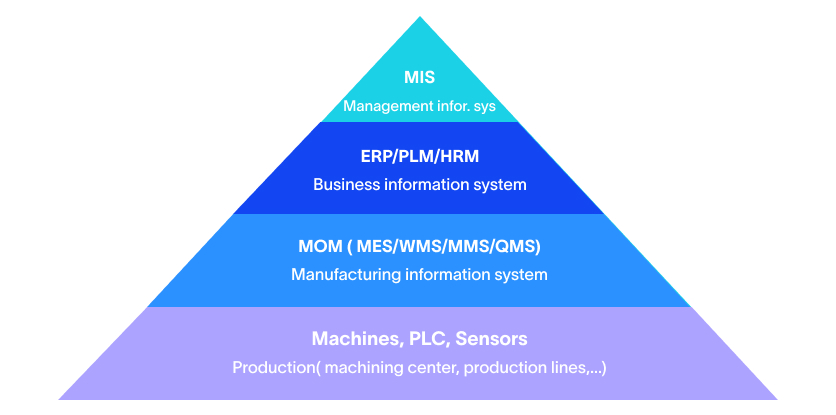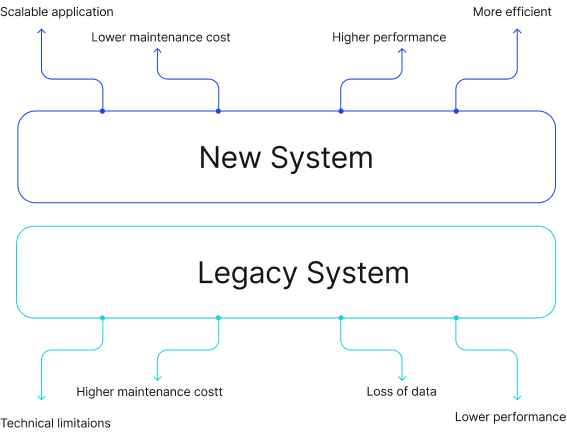The Power of Manufacturing Analytics: Turning Data into Competitive Advantage
Blog
5 Min 35 Sec Read
If your manufacturing decisions still hinge on shift summaries or end-of-month reports, you’re already falling behind. The leaders in your industry aren’t waiting for weeks or days to gain new insights anymore. They’ve embraced the real-time, data-driven design that empowers smarter, faster decisions on the factory floor.
Manufacturing analytics is also not a luxury anymore. It’s become a crucial tool that can transform raw numbers into actionable insights – which, in turn, gives manufacturers a true competitive advantage in the evolving market.
In this article, we’ll dive into how real-time data collection is reshaping operations across the industry. We’ll also take a closer look at the technologies driving this shift and explain how INS3’s proven discovery process can help you unlock the full potential of production data analysis. Let’s get started with it.
Cut Downtime, Boost Output: Discover how real-time analytics keeps your production line moving.
You Don't Need More Data — You Need Better Visibility
Most manufacturers today are already sitting on a mountain of production data. However, here’s the issue – much of this information is siloed, messy, and disconnected. So, without the right approach, all this data can become something more of a burden than an advantage for the organization.
Some of the most common challenges in this context can include –
- Systems operating in isolation, without any real communication between them
- Delays in accessing critical production metrics when timing matters most
- Inconsistent data formats that make integration a nightmare
- Manual data collection processes introduce errors & slow down decision-making
- Difficulty in correlating events across different systems to see the bigger picture
As most seasoned manufacturing experts often point out, many factories are “data rich but information-wise, very poor.” Unfortunately, collecting numbers isn’t just the answer anymore. The real breakthrough lies in connecting and contextualizing the data you have already acquired through your manufacturing unit.
Manufacturing analytics usually plays a pivotal role here – and helps in bridging gaps and transforming raw numbers into real-time factory insights. By deploying advanced industrial data analytics tools, you can break free from data silos, find hidden patterns, and turn fragmented information into a powerful competitive advantage.
Explore our in-depth guide on manufacturing analytics tools to help operations managers turn real-time data into smarter decisions.
Real-Time Data: The Foundation of Manufacturing Excellence
What truly sets modern manufacturing analytics apart is the shift toward real-time data collection and analysis. It’s not just a trend – it’s reshaping the very core of how manufacturers operate today. By moving beyond delayed reports and outdated snapshots, real-time data fundamentally improves operations by –
- Detecting quality issues as they emerge, long before flawed products leave the floor
- Alerting maintenance teams to anomalies early enough to prevent costly equipment failures
- Giving operators immediate feedback when they make process adjustments
- Empowering managers to make smarter, faster decisions based on what’s happening right now – not last week
At INS3, we specialize in connecting directly to your machines and systems to capture two important streams of real-time data –
- Time-series data – Continuous sensor readings and equipment metrics that reveal trends, patterns, and early signs of deviation
- Manufacturing event data – Specific occurrences that impact performance, like:
- Downtime incidents, along with detailed reason codes
- Quality inspections and deviations from standards
- Waste tracking and classification
- Production counts, material usage, and cycle times
By capturing both ongoing measurements and discrete events, INS3’s solutions create a comprehensive, actionable view of your operations. This level of visibility also fuels true data-driven manufacturing, which, in turn, can help you improve your productivity and focus on critical goals, such as –
- Reducing scrap in manufacturing
- Improving your manufacturing team’s overall efficiency
What Manufacturing Analytics Actually Looks Like?
Manufacturing analytics isn’t just another abstract concept. It’s a structured and practical discipline built on a foundation of proven components. In a modern factory environment, it typically includes –
- Data Collection Infrastructure: Secure and reliable connections to PLCs, MES platforms, SCADA systems, quality systems, and IoT sensors
- Data Standardization Layer: A Unified Namespace architecture that mostly normalizes information from different machines and systems
- Processing Engines: Intelligent tools that contextualize incoming data and extract various meaningful patterns
- Visualization Platforms: Intuitive dashboards and interfaces that turn complex data into clear, actionable insights
When these components work together, most of these raw numbers are transformed into a powerful strategic asset. A well-designed manufacturing analytics platform doesn’t only store data – it also unlocks business value by offering –
- Real-time visibility into production status across lines, plants, and even entire enterprise networks
- Automated alerts when moment processes begin drifting away from optimal performance
- Historical analysis tools that spotlight recurring patterns and surface improvement opportunities
- Predictive capabilities that help in anticipating and preventing potential disruptions
Whether you are aiming for faster response times or targeting specific goals like line changeover optimization, a type of smart analytics strategy. And with modern factory data visualization tools, you will not have to sift through endless spreadsheets anymore. Now, you can see, understand, and act – faster and more efficiently than ever.
4 High-Impact Use Cases Driving Real ROI
Manufacturing analytics is much more than a buzzword now. It delivers real, measurable value across various operational functions. Let’s learn more about it –
Explore how advanced manufacturing analytics can help you cut waste and boost efficiency
Reducing Scrap & Waste
Real-time quality monitoring can empower manufacturers to –
- Detect process drift early, before it results in defects
- Uncover correlations between materials properties and quality outcomes
- Track waste by type, reason, and point of origin
- Implement closed-loop control systems that can automatically adjust and maintain optimal parameters
By focusing on these areas, manufacturers can not only reduce scrap but also optimize resource use, resulting in a marked improvement in overall efficiency.
Line Changeover Optimization
With the right event tracking and analysis, your team can –
- Break down changeover time into specific, actionable activities
- Pinpoint bottlenecks that slow down the process
- Standardize best practices across shifts and operators
- Lower downtime and lost production time through targeted process improvements
This level of insights can in eliminating unnecessary delays and improve production flow – addressing siloed data challenges that often hinder seamless transitions.
Predictive Maintenance
Advanced operational efficiency analytics takes maintenance to the next level by shifting it from reactive to proactive:
- Real-time equipment monitoring identifies anomalies as they occur
- Pattern recognition algorithms detect early warning signs of wear or malfunction
- Maintenance teams can address issues before they lead to breakdowns
- This proactive approach ensures production runs without unexpected interruptions
By anticipating issues before they escalate, manufacturers can dramatically reduce downtime and extend equipment lifespans.
Real-Time Decision Support
Exception-based management powered by manufacturing analytics can help in streamlining operations by –
- Enabling managers to focus on areas where attention is needed the most
- Sending automated alerts that highlight deviations from targets
- Providing decision support tools that suggest corrective actions
- Allowing teams to respond to problems while they are still manageable
This use case exemplifies how real-time data doesn’t just inform – it drives action, allowing teams to stay on top of operations without falling behind.
These examples showcase how manufacturing analytics, when used correctly, leads to concrete business results – especially when overcoming challenges like siloed data and inefficient decision-making processes.
INS3’s Proven Discovery Process: Your Path to Analytics Success
At INS3, what truly differentiates us is not just our technology – it’s the structured way we approach every manufacturing data analytics project.
Our proven Discovery Process ensures that your technological capabilities are fully aligned with your business goals, setting the stage for real, measurable success.
Stakeholder Alignment
Our team starts by diving deep into your specific business challenges. Cross-functional teams work together to surface critical pain points and prioritize objectives. We also evaluate potential use cases carefully based on both impact and feasibility – which helps us ensure the greatest value right from the beginning. At this stage, success metrics are also established, offering a clear guide for the implementation journey ahead.
Technical Assessment
Next, our engineering experts perform a detailed walkthrough of your plant. We take a full inventory of existing systems, sensors, and data sources – yes, every data point matters. Along the way, we identify connection methods for each source and conduct a thorough gap analysis to highlight areas requiring additional instrumentation. This foundational step is essential for enabling Predictive analytics in manufacturing.
Discovery Report and Roadmap
All findings are consolidated into a comprehensive Discovery Report.
This document doesn’t just capture the current state; it outlines clear, actionable recommendations for moving forward. We define resource requirements, set realistic timelines, and even calculate the expected ROI—empowering you to make informed investment decisions with confidence.
Turn Your Data into a Competitive Advantage — Starting Today
In today’s fast-moving manufacturing landscape, simply collecting data isn’t enough.
The ability to analyze and act on insights in real time has shifted from being an advantage to becoming a critical necessity.
At INS3, we specialize in connecting industrial systems, normalizing fragmented data streams, and delivering actionable intelligence – empowering manufacturers to stay ahead of the curve. Our approach to manufacturing analytics enables you to:
- Make faster, more informed decisions with greater confidence
- Detect and address potential issues before they escalate into costly problems
- Optimize your production processes based on real-world performance data
- Lay down a robust data foundation for ongoing, measurable improvements
By integrating Predictive analytics in manufacturing environments, we help companies transform their operations – driving efficiency, boosting resilience, and enabling true real-time decision-making.

Agile MES: The Key to Unlocking Smart Manufacturing Success
MES is a computerized system used in manufacturing operations to track and document the transformation of raw materials into finished goods. An MES system typically manages and monitors work orders, equipment, materials, and personnel on the shop floor. The system provides real-time visibility into production processes, helps optimize manufacturing operations, and improves the overall efficiency of the manufacturing process.

Understanding OEE: The Key to Manufacturing Efficiency
In today’s competitive manufacturing landscape, improving efficiency and productivity is crucial for businesses to remain competitive. One of the key metrics used to measure manufacturing efficiency is OEE or Overall Equipment Effectiveness. In this blog, we will take a closer look at OEE and its importance in manufacturing.

How to Effectively Conduct a Legacy System Integration
Legacy system integration can be a daunting task, but it’s a necessary one for many manufacturers that rely on outdated systems to run their business. Integrating legacy systems with modern technology can improve efficiency, streamline processes, and save time and money. However, it’s important to approach the integration process carefully and methodically to ensure success.
Share on :
Keep On Reading
Subscribe to Our Newsletter
Subscribe to our weekly newsletters to get updates regarding our new production, behind the scene process of our art creation and much more.
After submitting this form you will receive an e-mail with a confirmation link that you must click to complete your request. Detailed information on processing and cancellation can be found in our privacy policy.

